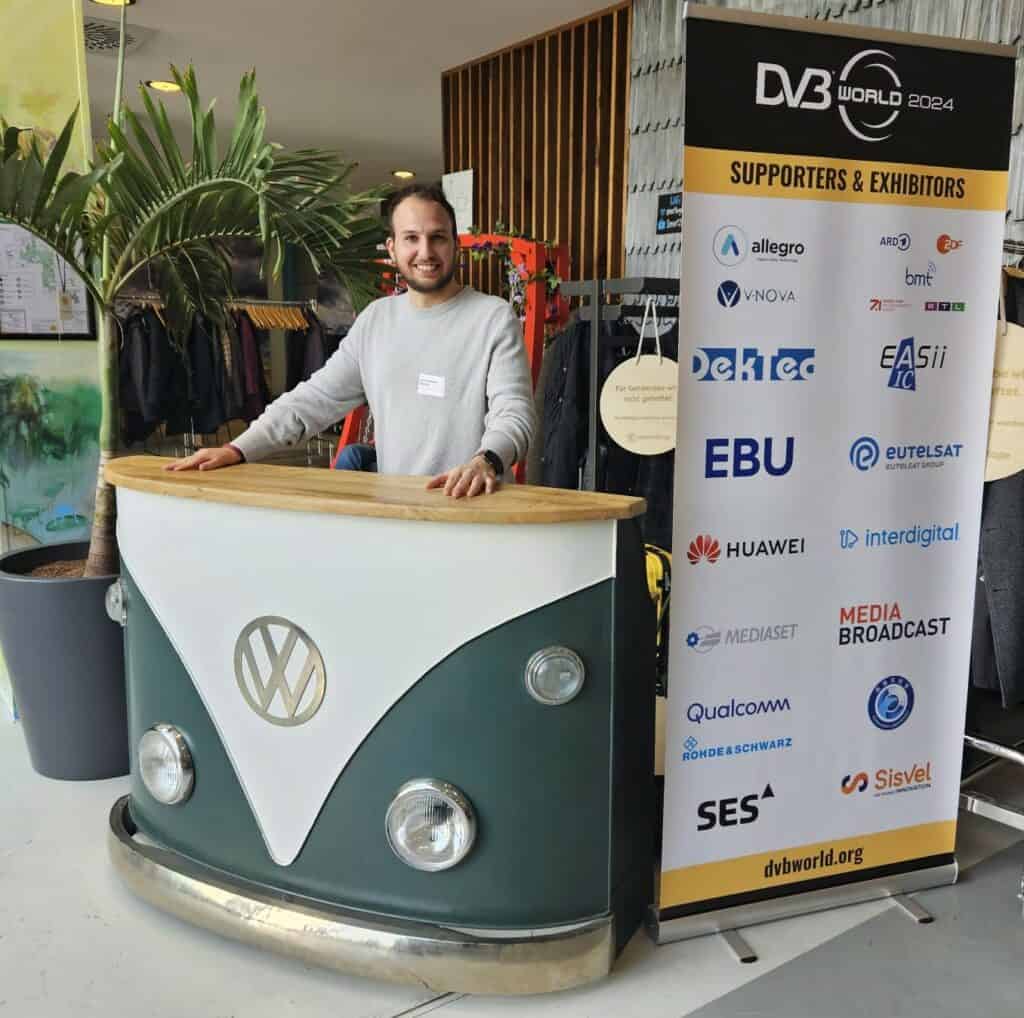Recently, MainStreaming touched down in Munich to attend DVB Project World, an industry-led consortium of the world’s leading digital television and technology companies that work together to design open technical specifications for digital media delivery.
MainSreaming’s Technical Account Manager, Alessandro Frasca, and Sales Director, Dan Racioppa, joined the conversations that matter on the future of media delivery. 👨💻 👨💻
They took advantage of two days at DVB Munich by meeting with visitors and discussing how OTT service providers, broadcasters, and content owners can benefit from MainStreaming’s Net Zero Edge Video Delivery Network services to scale their live streams to millions of simultaneous viewers while maintaining broadcast-quality standards.
It painted a picture of the future of media delivery through keynotes, technology updates, and quickfire briefings on the latest developments and trends in media distribution.
Edge Computing, Scalable Live Streams, and Sustainable Streaming were central topics at the event, highlighting their growing dominance in the media delivery industry.
As live streaming becomes increasingly popular among internet users, one of the key trends for 2024 is the rise of interactive experiences.
People no longer wish to engage passively in watching live streams, do they? Millions of us seek active participation in the live streaming experience, aiming to do so without negatively impacting the environment.
Edge Computing plays a pivotal role in fulfilling this demand. MainStreaming’s Carbon Neutral Video Edge Network is at their service, effectively meeting this need.
Reflecting on the key takeaways from #DVBWorld2024
Let’s look back on an insightful conference and many stimulating conversations they had about TV and streaming. Here are some of the key takeaways from the dynamic shifts shaping the future of broadcasting:
–Embracing Change: With the existing DVB standards and roadmap for future developments, DVB enables the convergence of broadcasting and broadband and offers interoperable solutions for both worlds. This is essential for DVB to stay relevant in a continuously evolving landscape.
– Beyond Linear TV: While linear TV remains pivotal, broadcasters must adeptly navigate the challenges of the market by ensuring their content is readily available in the OTT space. Sole reliance on HbbTV may not be enough.
– DVB-I: DVB-I emerges as the cohesive force among many DVB specifications, yet adoption faces hurdles. A chicken-and-egg dilemma persists: broadcasters await manufacturers, while manufacturers await regulatory cues and regulators need to be triggered from the market.
– Targeted Advertisement Standardisation: Exciting strides have been made in standardising targeted advertisement specifications, catering to diverse use cases. This development holds particular significance for operators seeking to enhance the value of advert breaks in linear TV. TARA Systems is proud to offer software solutions in this space which are technologically aligned with the DVB standards.
Let’s continue to drive innovation and collaboration in shaping the future of broadcasting together!
MainStreaming representatives made the most of the last day at the DVB Project in Munich.
They thank you all for qualitative conversations, fostering seamless streaming for all!
Here’s how they wrapped up the German event of the month, sending you German vibes in style.







